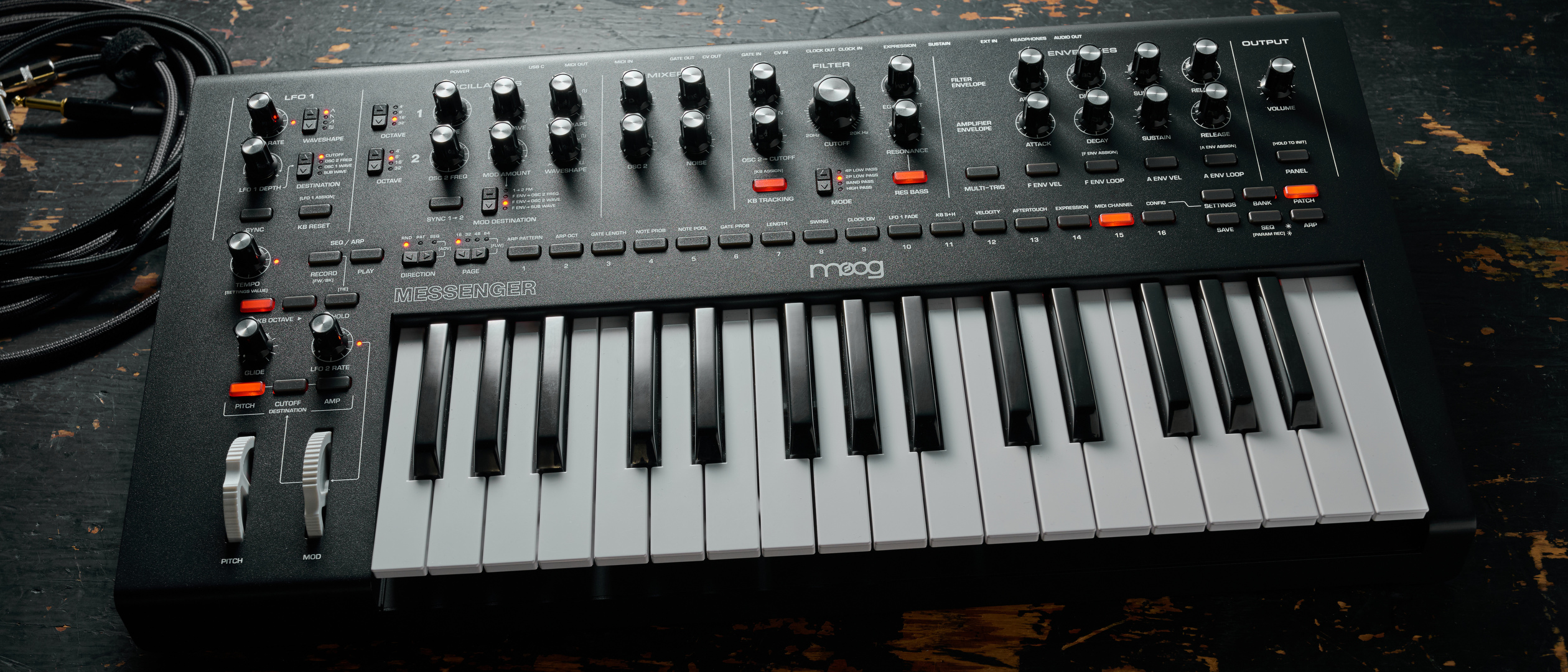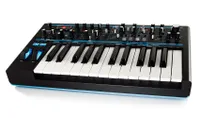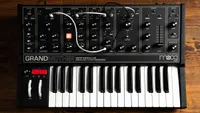MusicRadar Verdict
Despite looking a little conventional at first glance, Messenger packs some powerful tools that expand the classic Moog formula in interesting ways.
Pros
- +
Wavefolding and audio-rate modulation add character to the classic Moog sound.
- +
Quick Assign modulation system adds a wealth of creative possibilities.
- +
Expanded Ladder filter is a powerful upgrade.
- +
Powerful sequencer and arp.
Cons
- -
Expensive compared to other monosynths.
- -
No onboard effects.
MusicRadar's got your back
Monosynths lie at the heart of Moog’s heritage. With the Minimoog Model D, Bob Moog not only brought the Moog sound to the masses, but set a template for analogue synth design that still influences designers today.
Throughout the years since the company’s revival at the turn of the millennium, it has offered a variety of mass-market monosynths that pay homage to the legacy of the Model D. From the Minimoog Voyagers of the early-’00s through to the Sub and Subsequent-tagged bass synths of 2010s.
What is it?
Although it might not immediately look like it, Messenger is the latest addition to that lineage. An all-analogue monophonic synth equipped with a 32-note keyboard, Messenger effectively replaces the recently discontinued Subsequent 25 in the company’s lineup, becoming the cheapest way to access the classic Moog sound without venturing into the realm of semi-modulars.
Visually, Messenger is a break from the Moog synths of the 2010s. Gone is the angled, Model D-inspired profile of the Voyagers and Subs, replaced by a flatter design and a matt black look closer to last year’s Muse polysynth.
I’ll be honest, the first time I saw Messenger in person I was a little underwhelmed. It’s a little smaller than it looks in pictures, and the design is more understated than we’re used to from Moog.
On paper too, there’s not much about Messenger that jumps out as truly innovative or exciting within the context of modern monosynths. It touts wavefolding capabilities and an updated Ladder filter, but beyond that it all looks a bit business-as-usual.
Pricing
- £699/$899
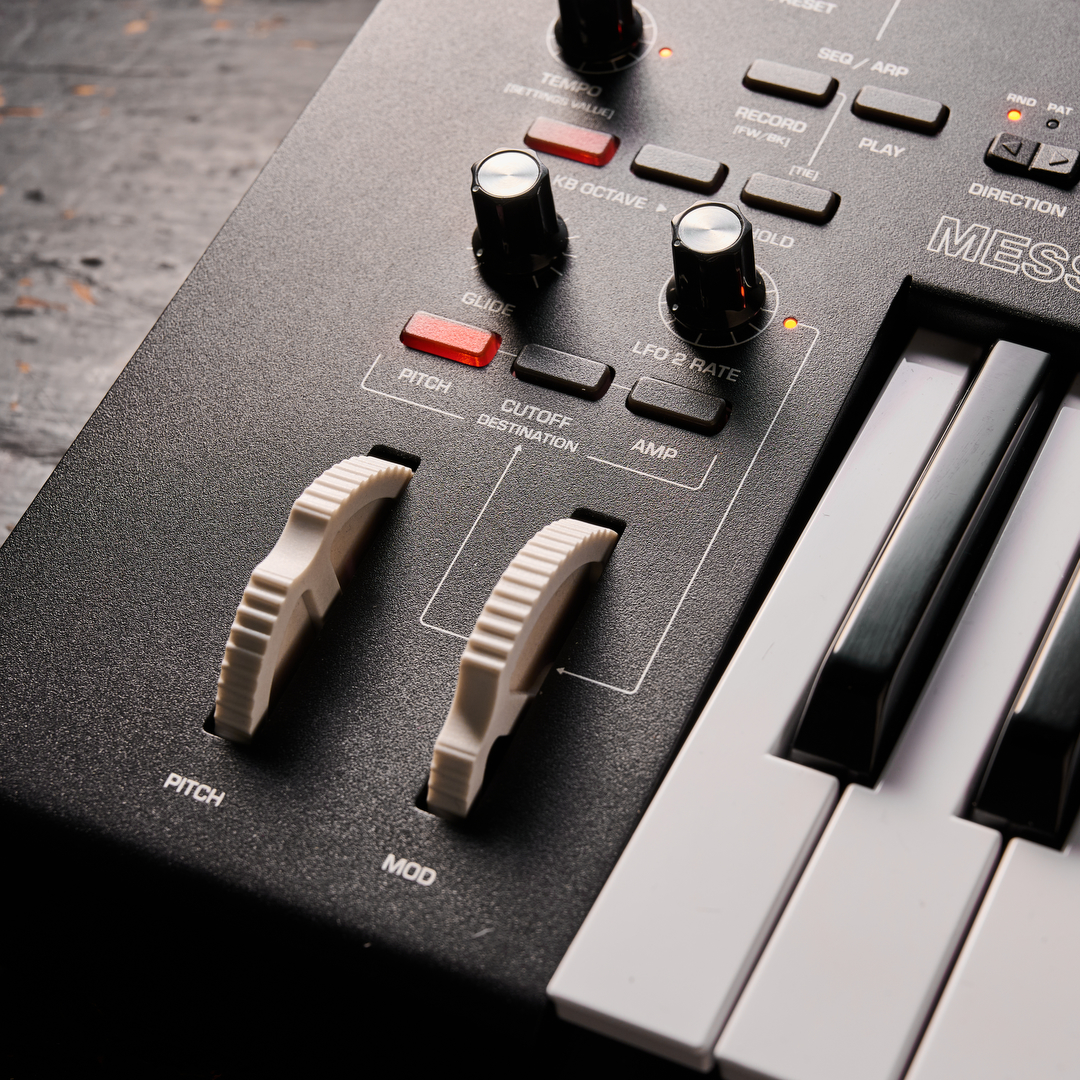
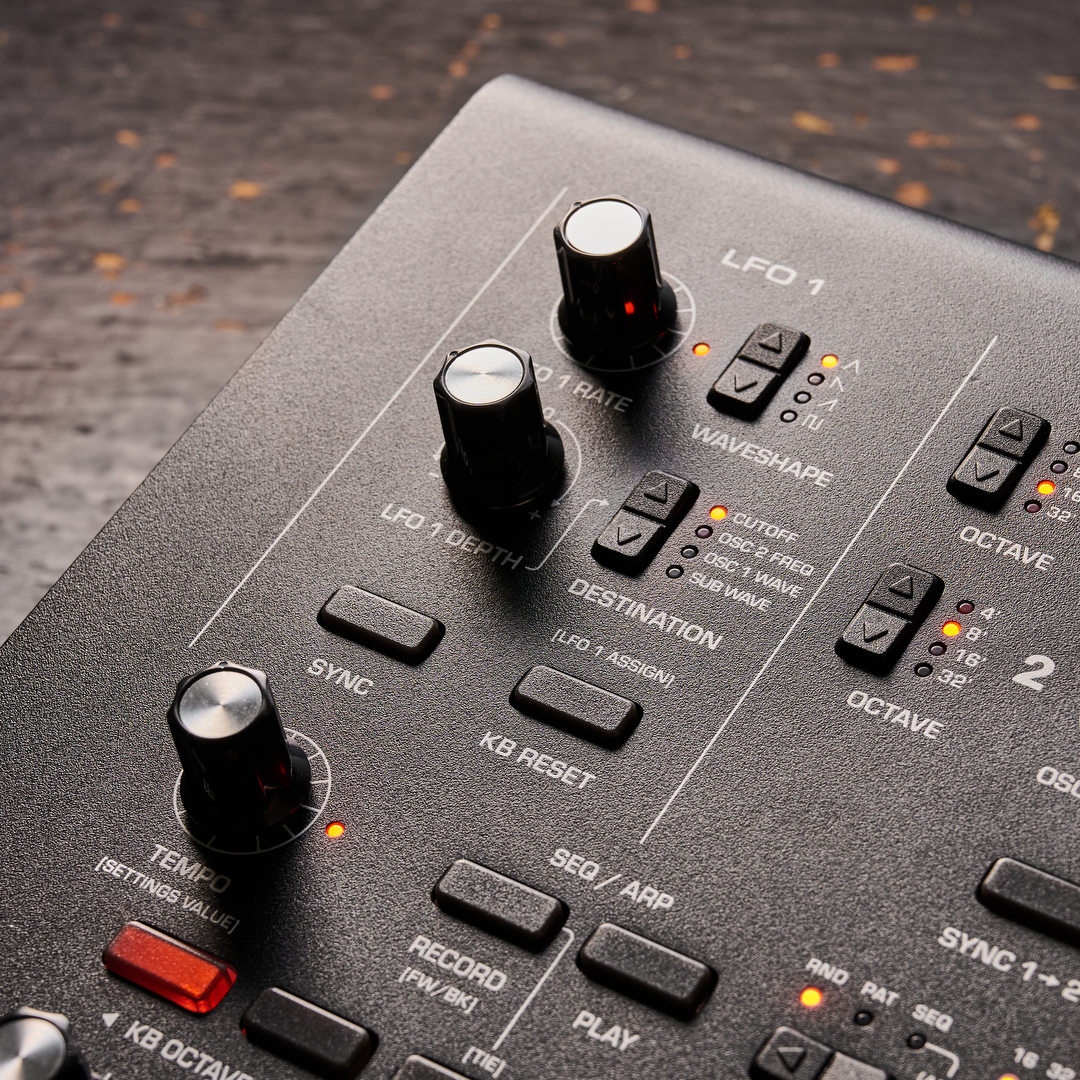

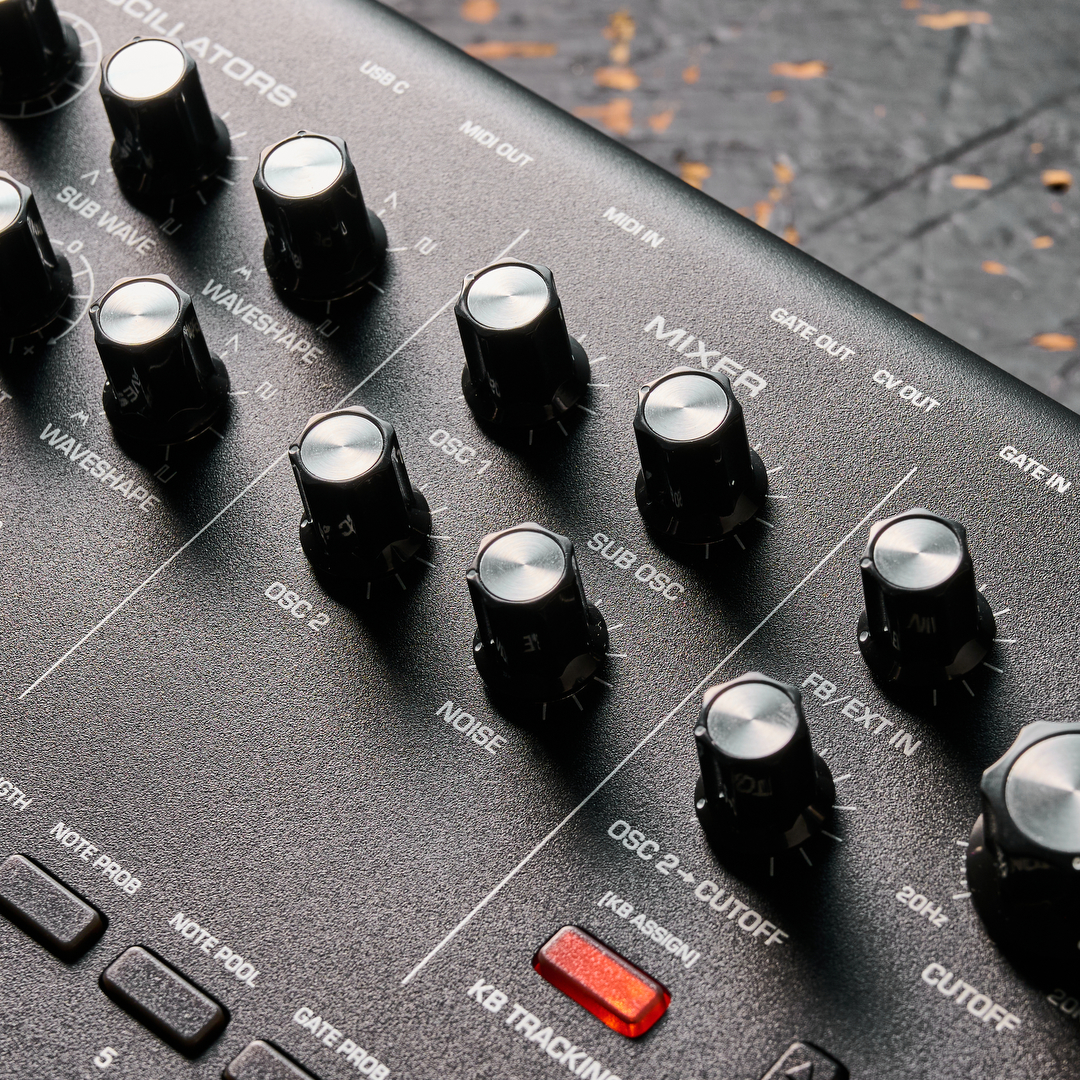
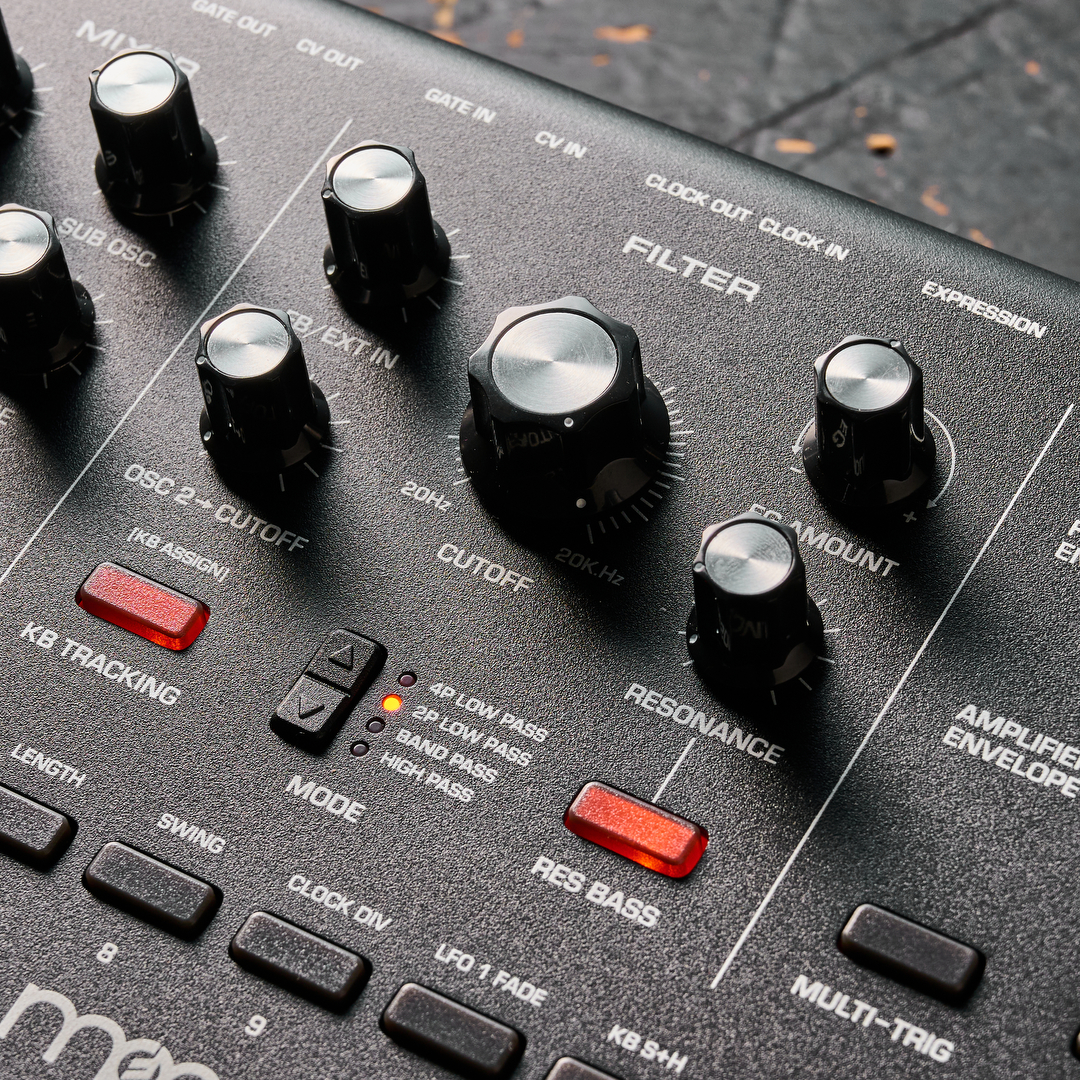
Performance
I’m pleased to report, however, that those first impressions were mistaken. In terms of the hardware itself, although it’s modestly-sized, Messenger’s metal chassis and sturdy controls feel robust and professional.
Want all the hottest music and gear news, reviews, deals, features and more, direct to your inbox? Sign up here.
It also finds space on the rear panel for an impressive amount of I/O, including full sized MIDI connections, an audio input, sustain and expression ports, as well as CV/gate inputs and outputs.
As for the sound engine, although this is very much a traditional analogue monosynth at heart, the more you dig into its capabilities, the more you find creative ideas and design flourishes that lend themselves to distinctive, characteristic sound design.
At its core
The basic layout of Messenger is heavily influenced by the classic Minimoog design. It features two main oscillators joined by a simple sub oscillator, which feed into a resonant Ladder filter, with two ADSR envelopes and two LFOs providing modulation.
A feedback/ext input control at the filter stage allows Messenger to be overdriven for some classic Model D-style grit, while the pre-patched connection between LFO 2 and the synth’s mod wheel lends itself to the vibrato flourishes typical of classic Moog synth performances.
Throughout this design, however, are touches that elevate Messenger into more modern, adventurous territory.
Each of the synth’s oscillators, including the sub, has a continuous waveshape control that can be morphed and modulated to shift the shape of the output whilst playing. For the sub oscillator, this ranges from triangle through to various widths of pulse wave.
The two main oscillators span from various pulse widths through saw and triangle waves, with waveshaping at the leftmost point of the dial. This distorts the triangle waveshape by folding the peak back in on itself.
It’s a common feature of Buchla-inspired modular synths – and also present on Moog’s own Labyrinth semi-modular – and works great for creating raspy, metallic tones.
Messenger also features various oscillator modulation options. The front-panel Mod control lets users apply frequency modulation between oscillators 1 and 2, or modulate oscillator 2’s pitch or the shapes of osc 2 or the sub osc via the ADSR filter envelope. Further audio rate modulation can be set up using Messenger’s simple touch-to-assign routing (more on this shortly).
Messenger’s filter updates the capabilities of the classic ladder filter design too. Whereas traditional Moog filters were usually all 4-pole (24db), Messenger’s can also be switched into 2-pole low-pass, high-pass and band-pass modes. The key innovation here, however, is a Res Bass switch that engages a multi-pole mode to maintain bass presence as you turn up the resonance.
Classic low-pass ladder filter designs have a tendency to sound thin in the low end as you boost the resonance. By engaging the Res Bass switch here it’s possible to achieve those raspy, acidic high resonance tones without losing low-end punch.
Messenger’s filter section also comes equipped with audio-rate modulation that can be dialled in from oscillator 2. This, along with the feedback option, can help to quickly dial in gritty, harmonically complex distortion.
One of my favourite elements of Messenger’s design is its loopable envelopes. When engaged for either of the two ADSR envelopes, this will cause them to act more like an additional, multi-stage LFO, which can be great for creating pulsing, rhythmic tones.
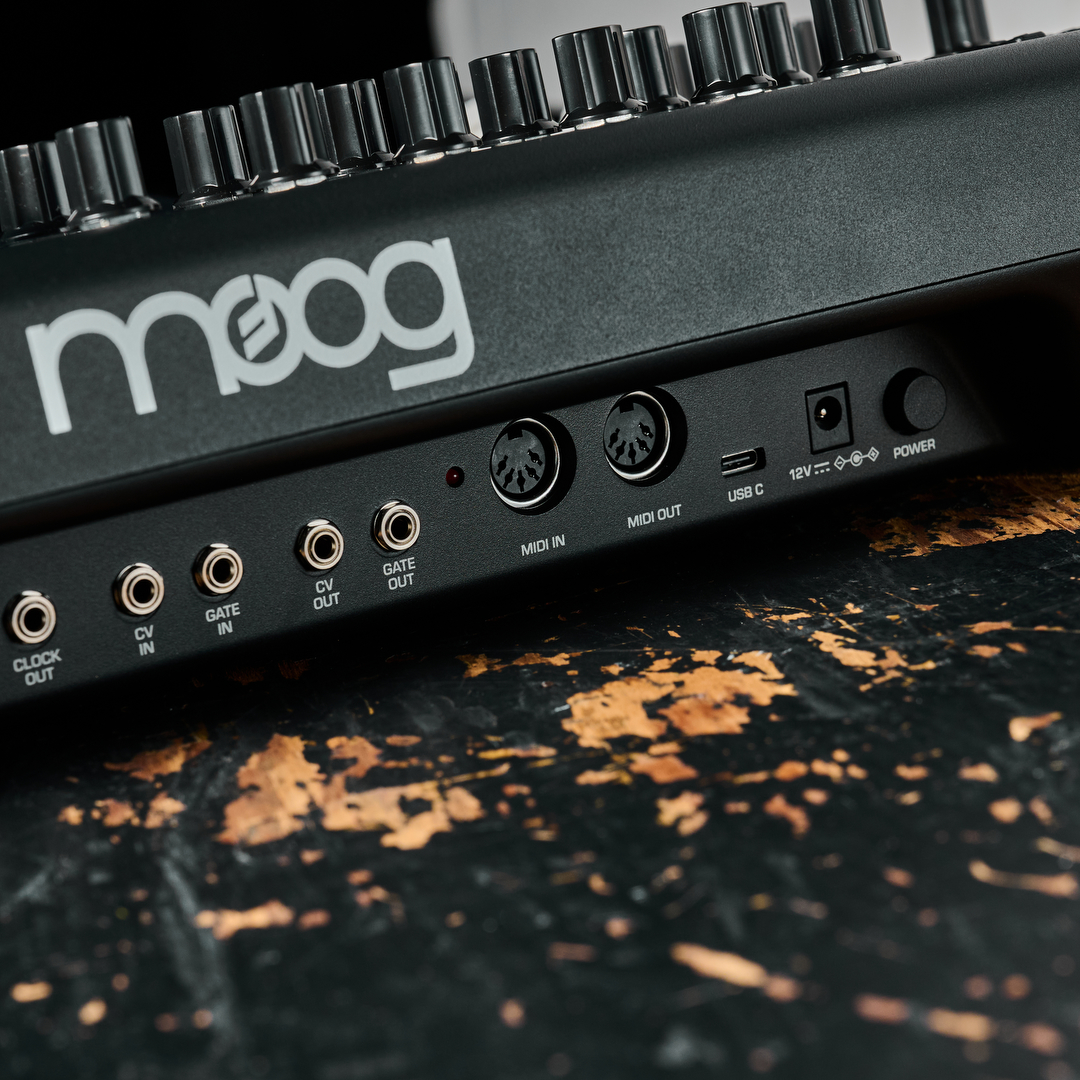
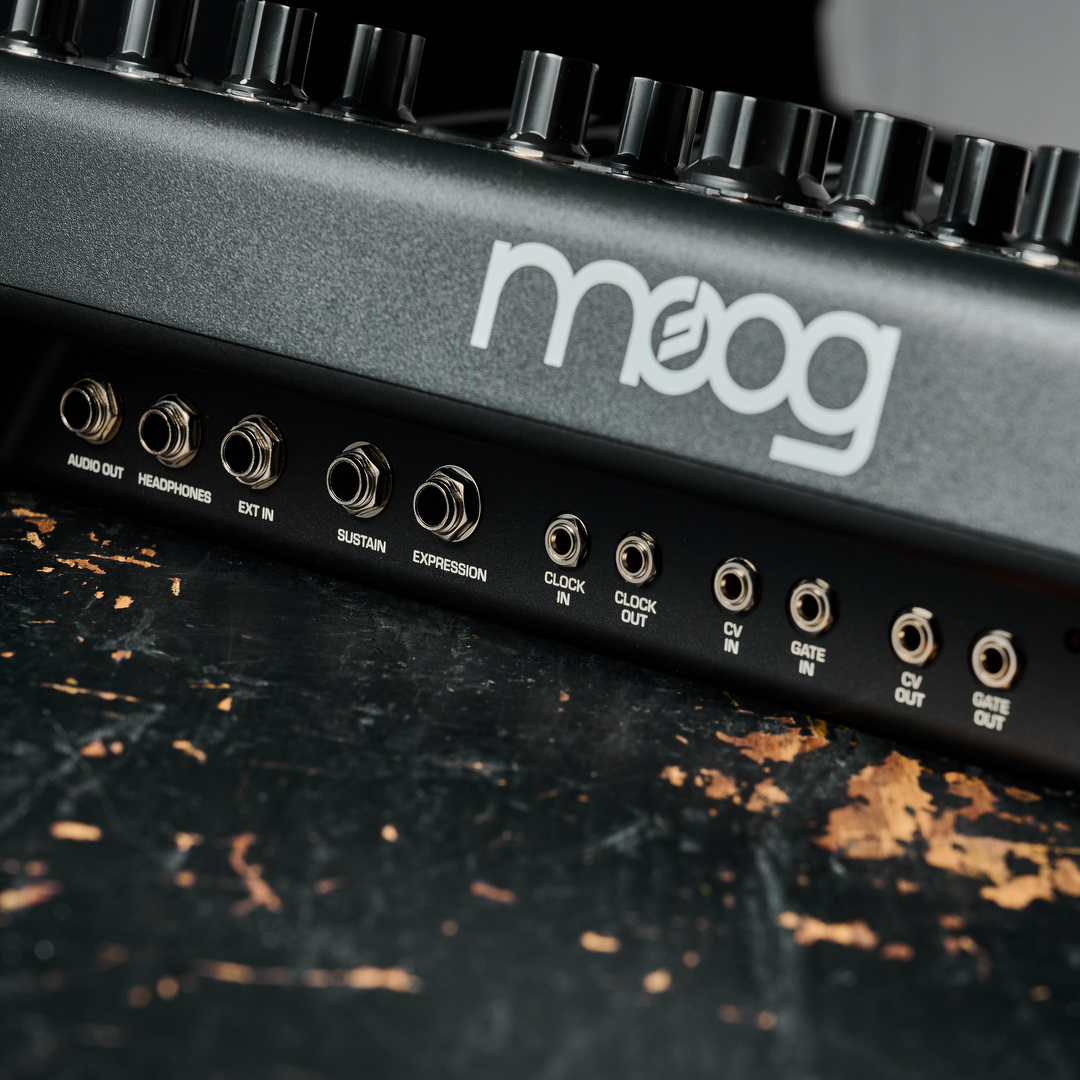

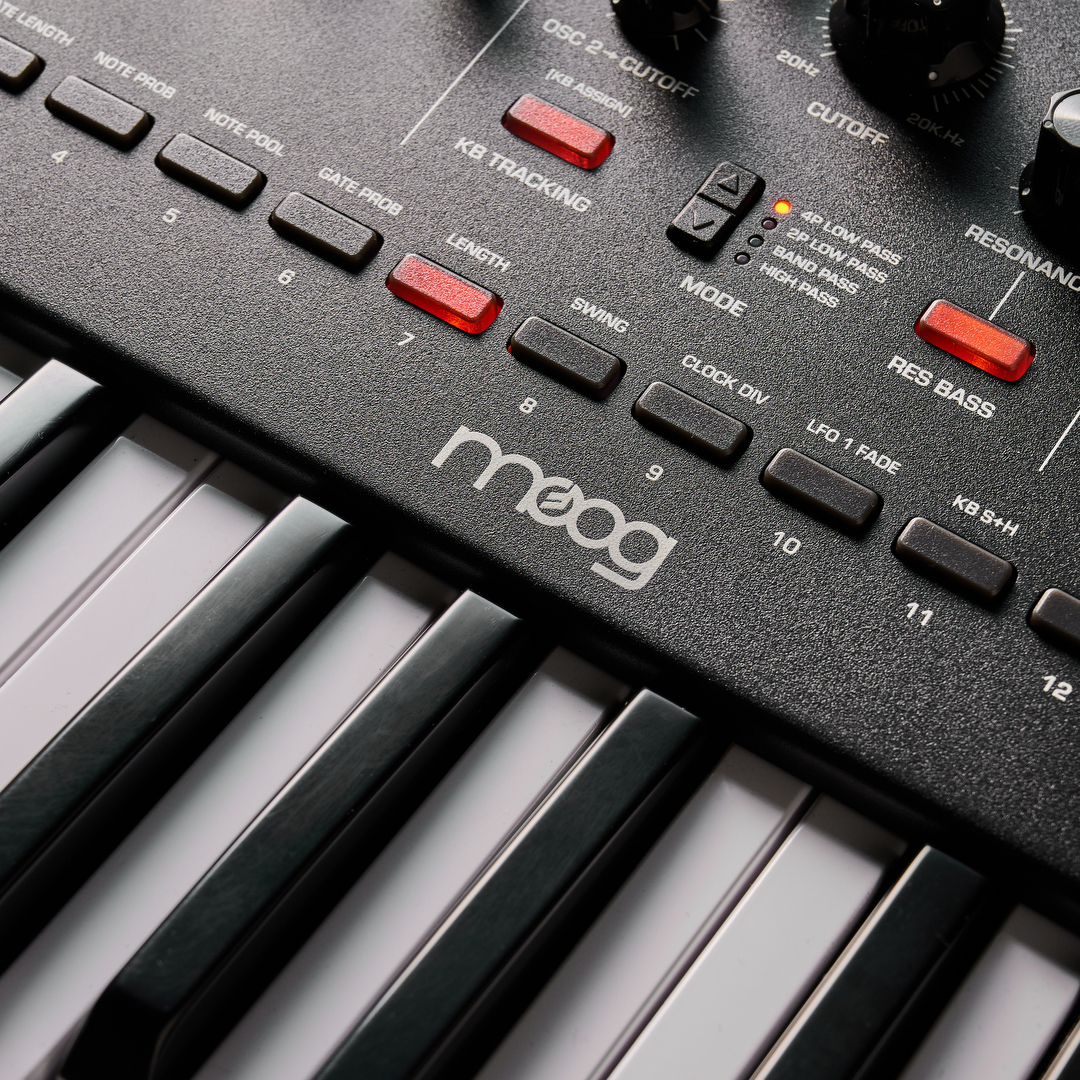
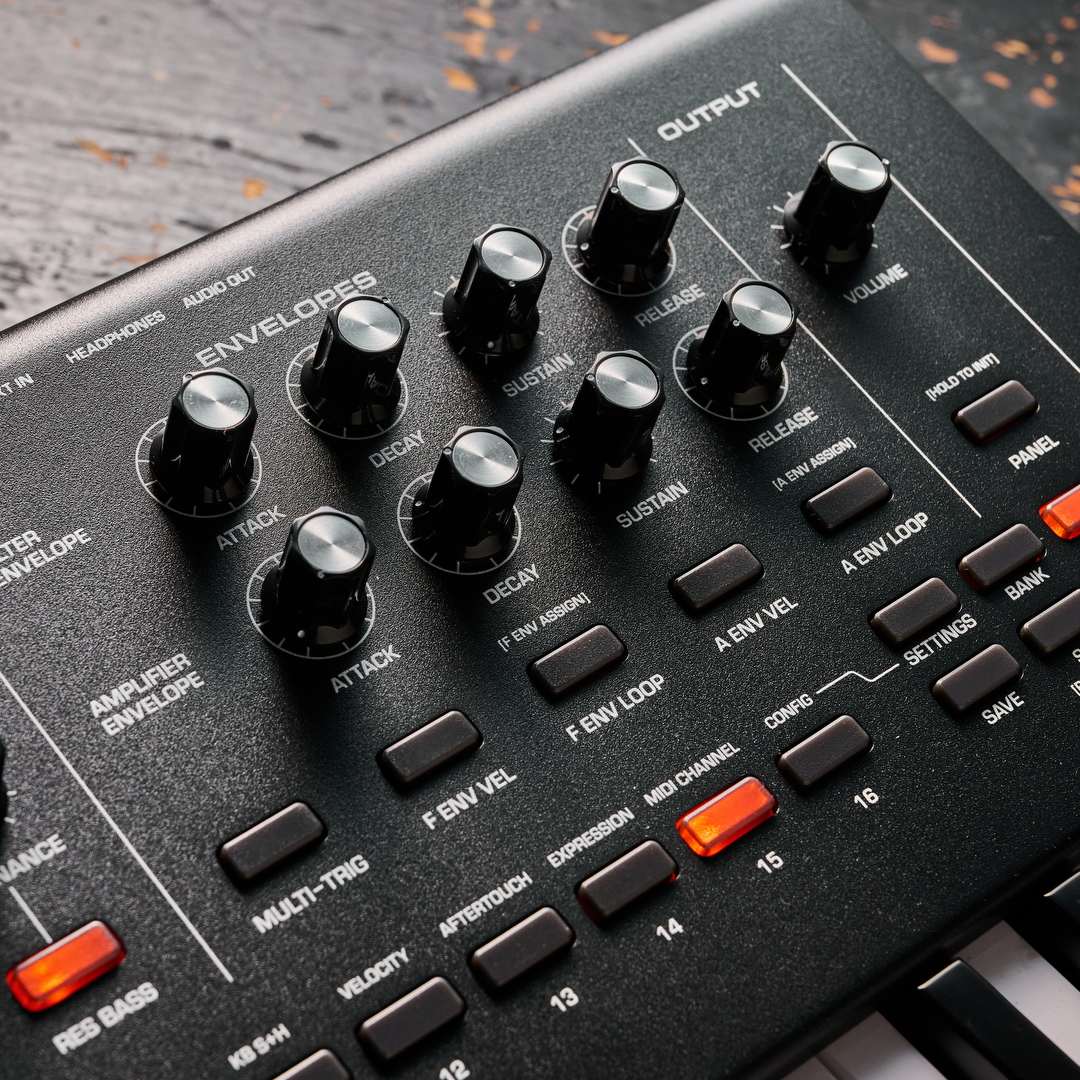
Although the synth’s front panel has a variety of pre-routed options for its envelopes and LFOs, any one of its front panel controls can be assigned as a modulation destination using its Quick Assign functionality. With a simple button press, it’s possible to assign any of the modulators to any control you can get your hands on, with the row of sequencer buttons lighting up to indicate the depth of the modulation.
At this price point, it's a shame Messenger packs no onboard effects.
Beyond the LFOs and envelopes, modulation can be routed from the keyboard in several ways, with Quick Assign options for keyboard tracking, keyboard sample & hold, velocity, aftertouch and expression.
Speaking of the sequencer, that provides another highlight of Messenger’s design. The synth can make use of both arp and step sequencer functions, each of which offers some neat creative tricks.
The arpeggiator has a total of 13 patterns and a variety of octave range options, including various randomised modes.
The 64-step sequencer, meanwhile, inherits a variety of creative tools from the flagship Muse poly. Highlights here include note and gate probability, and the Note Pool functionality, which allows the user to assign a variety of note options to a single step, and then have the sequencer randomly select between these options each time it cycles.
Messenger’s sequencer also allows users to record automation for any of its front panel controls to each step, which allows for the creation of some wonderfully varied and characterful patterns, particularly when you start adjusting audio-rate modulation and wavefolding from step-to-step.
Verdict
At first glance Messenger appears to be a fairly straightforward monosynth, and to an extent this is true. Its Model D inspired signal flow is more than capable of classic, simple bass and lead patches that nail the vintage sound many are looking for from a Moog-branded monosynth.
The largely knob-per-function UI makes Messenger one of the most immediately approachable instruments in Moog’s current line-up too. This immediacy is aided significantly by its crop of well-designed, highly usable presets too.
Dig a little deeper though, and the synth’s modulation, sequencing and sound-shaping tools offer a multitude of inspiring options allowing for adventurous and characterful sound design.
On its own terms then, Messenger is a definite success, and a worthy addition to Moog’s long history of analogue synths. Where it potentially stumbles, however, is when placed in the wider context of the contemporary monosynth market.
We’ve seen a lot of analogue monosynths hit the market in the past decade or so, and particularly in the sub-£1000 bracket where Messenger finds itself, things are very competitive.
While the £699/$899 price tag of Messenger is far from the most expensive monosynth on the market (or even in Moog’s own lineup), it's also a significant step up from the likes of the Korg Monologue, Arturia MiniBrute or PWM Mantis, each of which can be had for under £400/$500 – and none of which are a huge step down in terms of features.
Bass off
To my mind, Messenger’s closest comparison is the Novation Bass Station II, which is an excellent analogue monosynth that currently retails for almost exactly half the price of Messenger, at least in the UK.
To be fair, this isn’t entirely surprising. The Bass Station II is over 10 years old, and Messenger does boast some premium features that warrant a bump in price, including an aftertouch-equipped keyboard and a more comprehensive sequencer.
Sonically the two machines have their own distinct personalities too – the BS II is a touch grittier and noisier, while the Messenger is punchier and better at tight, rounded basses.
Given the company’s legacy, Moog gear tends to be priced with a bit of a ‘Moog premium’, which places it a little above the competition. Whether this is still warranted in the days of inMusic ownership and overseas production is debatable, but Messenger is undoubtedly a quality, professional-level monosynth.
I feel like, at this price point, it's a shame Messenger packs no onboard effects, which could have set it apart from the competition a little more.
Whether you think it’s worth taking the plunge now, waiting a while for the price to come down or opting for a more affordable competitor is up to you.
Hands-on demos
Moog
Alternatives
Similarly equipped, if missing a few of Messenger's bells and whistles. In the UK you can currently pick up the BS II for just over half the price of Messenger.
Read the full Bass Station II
An alternative spin on the analogue monosynth format from Moog. Grandmother is semi-modular, and adds a reverb unit into the mix.
Read the full Moog Grandmother review
Specifications
Key features | Monophonic Analogue Synthesizer SOUND ENGINE Analog NUMBER OF KEYS 32 TYPE OF KEYS Semi-Weighted with Velocity and Aftertouch CONTROLLERS Pitch Bend, Mod Wheel, Velocity, Aftertouch POLYPHONY Monophonic ANALOGUE SOUND SOURCES 2x Variable Waveshape Voltage-Controlled Oscillators with Wavefolder, 1x Variable Waveshape Sub Oscillator, 1x Analog White Noise Generator, 1x External Input/Filter Feedback |
Contact |
I'm the Managing Editor of Music Technology at MusicRadar and former Editor-in-Chief of Future Music, Computer Music and Electronic Musician. I've been messing around with music tech in various forms for over two decades. I've also spent the last 10 years forgetting how to play guitar. Find me in the chillout room at raves complaining that it's past my bedtime.
You must confirm your public display name before commenting
Please logout and then login again, you will then be prompted to enter your display name.
